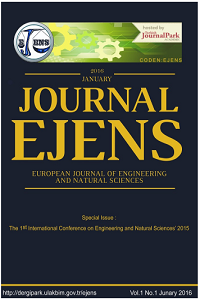Generation of a Multi-Layered Diffusion Coating on an Interstitial-Free Steel
Generation of a Multi-Layered Diffusion Coating on an Interstitial-Free Steel
boronizing,
___
- [1] A. K. Sinha, Heat Treating: Boriding (Boronizing) of Steels, ser. ASM Materials Handbook. Materials Park, OH, USA: ASM Int., vol. 4, pp. 978-997, 1995.
- [2] J. R. Davis, Surface Hardening of Steel: Understanding the Basics: Boriding. Materials Park, OH, USA: ASM Int., pp. 213-226, 2002.
- [3] N. Gidikova, “Thermodiffusion Treatment of Steel with Ti Thermodynamics and Phase Composition,” Mater. Sci. & Eng. A, vol. 222, pp. 84-90, 1997.
- [4] K. Dutta and K. K. Ray, “Ratcheting Strain in Interstitial Free Steel,” Mater. Sci. & Eng. A, vol. 575, pp. 127-135, 2013.
- [5] “ID: C1-103 Material Safety Data Sheet: Ammonium Chloride,” Chem. One, Houston, TX, USA, 2010.
- Başlangıç: 2015
- Yayıncı: CNR Çevre
The Abrasion Resistance of Mortars Containing Natural Zeolite Analcime
Determination of The Hip Stem Loosening Using Vibration Method
An Alternative Method for Long-Term Land Cover Change Detection: A Case Study of Hasanlar Dam
Firat Caglar Yilmaz, Sukran Sahin
Generation of a Multi-Layered Diffusion Coating on an Interstitial-Free Steel
Fikri Erdem Şeşen, Ömer Serdar Özgen
An Image-based Recommender System Based on Image Annotation
Kemal ÖZKAN, Zühal KURT, Erol SEKE
Investigation of Notch Root Strain Behaviors Under Combined Loadings
Toros Arda AKSEN, Emre ESENER, Mehmet FIRAT
Wastewater Treatment by Floating Macrophytes (Salvinia Natans) Under Algerian Semi-Arid Climate
Laabassi AYACHE, Boudehane ASMA
Developments and Applications in Enzyme Activated Membrane Reactors
Nadir DİZGE, Ruken Esra DEMİRDOGEN, Kasım OCAKOGLU
